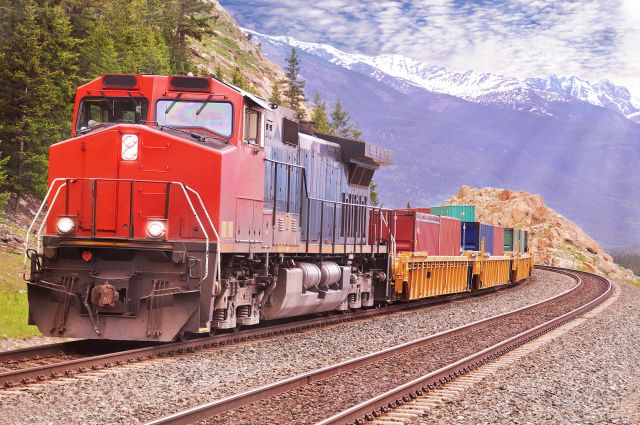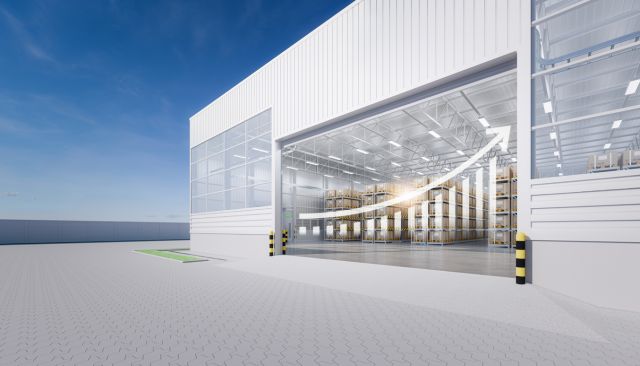Intermodal shipping has played an integral role in the advancement of industrialization, trade, and economic development in North America, as transporting products by boat, carriage (later by truck), and early railway systems increased the availability of goods across the country. Now, through the introduction of new technologies and an increase in supply and demand, companies are taking advantage of this method of transportation to maintain customer expectations, respond to the challenges currently facing the trucking industry, and prepare for the future of this growing sector.
Supply and Demand
E-commerce solutions have given individuals the ability to purchase products online, whenever and wherever they are. With companies providing the luxury of having items shipped right to the consumer’s door, buyers are continuing to purchase items online for the sake of convenience. It is no wonder then that an estimated 22.5 million people in Canada will choose to make purchases online, in 2018. In 2017, however, an estimated 40% of internet users in the United States visited and purchased from e-commerce sites several times per month. With an increase in the purchasing and shipping of goods across North America, the current capacity crunch that the transportation sector is experiencing is not surprising. As supply and demand increases, shippers are being forced to look for alternative methods of transportation to move products with ease and speed, while contributing to their bottom line. The Canadian National railway has already begun to implement a strategy to assist in easing the capacity crunch that is taking place, by investing 3.5 billion dollars into expanding their rail infrastructure in western Canada. Not only will this allow for more freight to be moved, but it will increase shipping times as well, in an already congested part of the country.
Integrating intermodal shipping solutions is just one way that companies are balancing the tons of freight that must be transported on a daily basis. Through utilizing railways across North America, the bulk of these products and goods can be transported the majority of the distance and then distributed from transportation hubs by transport trucks and LTL carriers.
Response to Fuel Costs
Canadians are becoming even more accustomed to fluctuations in fuel prices, as we are experiencing yet another surge in fuel costs as we progress farther into 2018. While drivers are wondering how they are going to budget for this additional expense, transportation companies are doing the same. Diesel prices have increased by 22% since 2017, according to the U.S. Energy Information Administration, increasing shipping costs at the base level and requiring companies to try to find ways to reduce miles driven, wherever possible. While some companies are acquiring additional warehouse space, others are investing in trucks that are more fuel-efficient, and are utilizing trailers designed to be more aerodynamic.
While rail systems require fuel as well to transport goods, the amount of freight that can be moved across the country is far greater than that moved by truck. It is also estimated that shipping by train is four times more fuel efficient than by truck, even when calculating fuel surcharges applied by rail carriers to cover the fluctuating costs of this precious commodity.
Driver Shortage
One of the most significant challenges that the industry is facing in 2018 is a lack of individuals choosing to pursue a career in truck driving. While industry leaders are proposing ways in which this shortage can be addressed through providing education about the industry, encouraging women to consider a career in trucking and analyzing current educational requirements, companies are choosing to adapt to this shortage through the services that they offer. Due to the ELD Mandate, designed to reduce driver hours and provide greater work/life balance, companies are also working to maintain driver schedules and increase efficiency during work hours. Intermodal shipping solutions offer a temporary solution as a bulk of the freight can be moved by train, without requiring the time of individual drivers during the transportation of the product. Once the cargo has reached its destination, truck driver’s are then only needed to transport products from rail terminals to warehouses or the end consumer, depending on the items being shipped.
Areas of Improvement
While intermodal shipping solutions are significantly impacting the transportation industry, much needs to be done to ensure that this solution can continue to meet the growing needs of customers. Currently, there is a considerable capacity crunch occurring within the rail space. Although the Canadian National railway is investing heavily into their future to expand intermodal solutions, there is nowhere near enough rail capacity to meet current needs.
These concerns were validated even more so when the Canadian National railway failed to transport billions of dollars worth of grain, that was later be placed on freighters, due to a lack of available trains and engineers. Although they are currently making efforts to resolve this issue, farmers are taking on additional debt as they only receive payment after the shipment has been delivered. Not only has CN’s brand image been compromised, but so has Canada’s image as a reliable supplier of grain.
When there are delays, it becomes challenging to recover an urgent load and have it continue its journey by truck. Shipping by rail is therefore beneficial for companies where ‘just in time’ delivery is not a requirement. With the frequent delays that can occur in shipping by rail, especially in the winter months due to low temperatures and snow removal, shippers and receivers need to take this form of intermodal shipping with a grain of salt. Although the ton per mile ratio of rail far outweighs that of transporting by truck, many shippers are finding themselves forced to pay more to have their shipment delivered on time by truck.
The logistics industry is one that has always had to remain at the forefront of economic growth and development while continuing to be openminded in advancements in technology to better serve customers and maintain the level of consistency for which it is known. As the industry continues to grow, intermodal shipping will allow for logistics companies to continue to adapt to the changing economic landscape, while providing incredible service to their customers.



